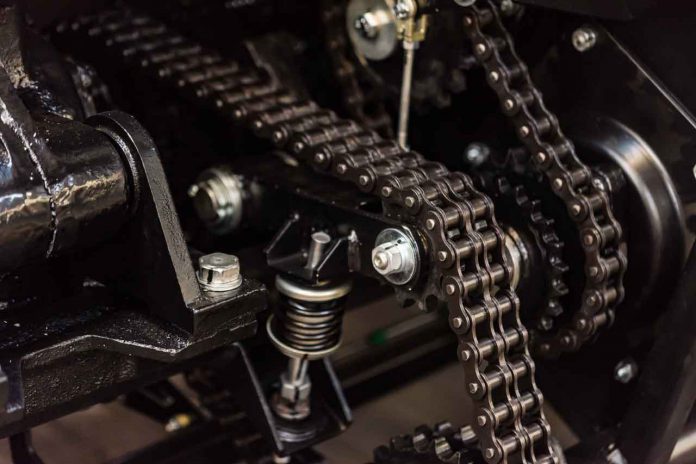No manufacturer can afford to neglect quality-ensuring processes, whether quality assurance (QA) or quality control (QC). In one study, the Harvard Business Review found the bottom tier of manufacturers produced products anywhere from 500 to 1,000 times lower in quality than their top-tier competitors, emphasizing just how far astray failures of adequate QA can lead a manufacturing organization.
The study also found that robust QA in Japanese factories in the early 1980s contributed to their surpassing of American manufacturers, with a defect rate 70x lower than American competitors, and 17x fewer first-year service calls. Among other things, failures of QA were found to be more expensive than the cost of implementing better QA.
QA failures damage a manufacturer’s brand because wholesalers and retailers who purchase the manufacturer’s products face damage to their own brands by offering inferior products. It’s a vicious circle that can’t be expected not to come back to haunt the manufacturer. Shoddy manufacturing quality eventually leads buyers to seek a different manufacturer or ultimately can cause a manufacturer to collapse under the weight of superior competition and fold. Either way, the manufacturer loses the customer and builds negative word-of-mouth. It’s a short trip to nowhere, fast.
Quality assurance (QA) and quality control (QC) often get misunderstood. QC measures detect failures; QA is a more global strategy to ensure that failures don’t happen. QC is a part of QA, implemented on the floor by employees of all levels. Management, however, ensures QA by enacting a quality management system (QMS).
Confused yet? To simplify as much as possible, management boosts QA by implementing a QMS to facilitate QC. QA sits at the top of the quality stack, and the buck stops with upper management. Any employee can fail at QC, but a failure of QA starts at the top.
Ready to get serious about QA—and the success of your manufacturing operation? Here are 5 quality assurance tips for manufacturers.
1. Have a Sound IQ OQ PQ Plan
As if you hadn’t had your fill of abbreviations with “Q” in the title, a strong quality assurance plan must cover at least three bases, each with their own abbreviation:
- IQ—installation qualification.
- OQ—operational qualification.
- PQ—performance qualification.
According to Dickson, IQ OQ PQ is commonly used in heavily regulated industries, as well as in instances where the product’s quality can affect the safety of consumers.
A quality assurance plan that addresses IQ OQ PG must implement quality control procedures at all three stages because they all represent possible points of failure. Addressing only one or two of them leaves your operation woefully vulnerable to quality failures.
Let’s take the example of a piece of manufacturing machinery. IQ validation involves confirming that the machinery was installed properly according to the specifications set forth by the machine’s manufacturer.
OQ validation requires running the machinery in test mode or simulated conditions to establish the parameters under which it will run.
Finally, validation PQ requires operating the machinery in the performance of its actual function to make sure it produces the desired results under the established parameters.
2. Train Employees Regularly in QC
While the QA buck may stop with management, quality management systems are usually implemented by employees, and failures of quality control can typically be traced back to employees with insufficient training in quality control. Remember, the point of QA is to make sure quality control failures don’t occur, so regular QC training should be a key feature of any QMS.
If need be, manufacturers should consider a professional QC assessment and outsource the creation and implementation of QC training. It’s a huge, time-consuming task that upper management probably does not have time for. The costs of letting QC slip, however, can far outweigh the expense of implementing a QC training program—even an outsourced program.
3. Automate the QC Process
QC failures tend to result from human error. While training employees to avoid QC mistakes can be effective, the better solution may be to remove human error from the equation by automating the QC process. QC automation should be a key component of every modern manufacturer’s QMS.
Consider implementing devices that belong to a class known as the Internet of Things (IoT)—devices that digitize or automate processes that used to require human input. For example, digital data loggers have been used to record temperature, pressure, and voltage conditions in manufacturing plants and machines for years.
However, only recently have data loggers evolved to include the automatic uploading and tracking of that data to the cloud to automatically produce compliance reports, as well as to produce alerts, on a smartphone app or elsewhere, when conditions emerge that threaten product quality—a drop in temperature, pressure, or voltage, for example.
4. Upgrade Infrastructure as Needed
Machinery, components, and other infrastructure may not have outlived their theoretical useful life, but it may be time to upgrade anyway. If newer infrastructure components could better prevent quality failures, consider upgrading ahead of schedule.
This could include infrastructure that operates more efficiently, more reliably, or which performs QC tasks automatically. For example, advanced IT architecture could integrate Artificial Intelligence (AI) technology, which can process vast quantities of data that would take a human-being years to read, and from that data identify potential problem areas or room for operational improvement—improvements you would never even know about without the most advanced infrastructure.
5. Audit Your Quality Management System Regularly
A QMS is not a “set-it-and-forget-it” process. It requires constant scrutiny and reassessment to remain current and respond to emerging problems. Manufacturing is not a static business. As materials, suppliers, and specifications change, the manufacturer must adapt, and your QMS must adapt in kind.
Establish a schedule to regularly audit your QMS, either by an in-house quality management team or—even better—by neutral third-party quality management experts. You can’t fix QA weaknesses you don’t know about, especially if they only emerged recently due to a change in operational practice or requirements.
Ultimately, it’s good news that quality assurance rests in the hands of upper management. It enables them to create systematized architecture that doesn’t depend on any one key employee to function. By creating a written, comprehensive QMS for the organization to follow, manufacturers can gain a level of trust that quality control isn’t one retirement or termination away from breaking down.







